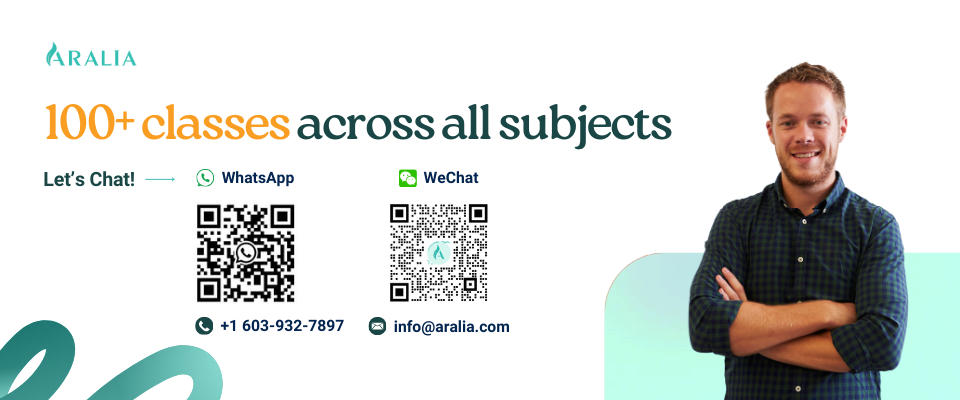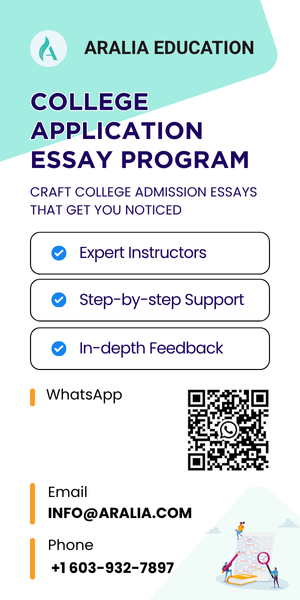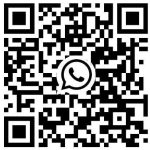With the increase in demand for courses at Aralia, our team is always working closely with students and teachers to understand the expectations of both sides. To develop a course curriculum, our creation process is unique in a way that is tailored to students’ needed areas of improvement, potential, and future growth. We include the students’ expectations in the curriculum building process, because Aralia’s purpose is focused on students and their achievement. While our process is unique, we generally follow below curriculum design structure so that our new instructors can best develop their curriculum for students. We will go into details below, but here is the grasp of it:
- Determine the purpose of the course
- Determine the students’ needs
- Outline potential topics and timeline
- Create a variety of assessments
- Determine materials and resources to be included in the curriculum
- Get feedback from various sources
Step 1: Determine the purpose of the course
Before sitting down and writing the course curriculum, teachers should have a clear list of purposes and goals about what they want to achieve in the course. Several questions you can consider while brainstorming the purpose are:
- Why am I teaching this material?
- What do the students already know?
- What do the students need to know?
- What things do they need to learn how to do?
A more advanced structure that you can refer to while developing your curriculum is the Common Core Standards. These core curriculum and standards are commonly used across American K-12 systems because they map out learning goals for each step in a student’s life, from primary school to middle school to high school. The standards clearly demonstrate what students are expected to learn at each grade level so that every parent and teacher can understand and support their learning. Besides the national standards, there are also state standards that you can follow, depending on whether you are planning to teach students from only one state.
For example, when developing a Reading and Writing course for middle school students, our instructors specifically wanted students to complete a paper at the end of the course, as the final result of a 10-week long course on analyzing popular readings and writing various reflections.
Step 2: Determine the students’ needs
Writing a curriculum is not about developing perfect lesson plans with goals that may seem unreachable for students. Instead, it’s more about understanding the difficulties that need to be addressed and potential improvements that students expect.
At Aralia, we make it easier for instructors to understand each student’s needs, by communicating with students who are interested in or sign up for the class. We then discuss this information with the instructor. For teachers who don’t have access to this level of support, they can conduct informal interviews with sample high school students to have some level of understanding about students’ general performance and interest. Therefore, they can take into consideration student’s needs when they develop a course curriculum.
Dr. Finey, an English educator has provided this free Unit Plan to better guide teachers in the curriculum-building process for English-Language learners. You can take a look at this step-by-step guide for reference. In the resources, he mentioned that teachers should identify students’ level of content mastery and prior knowledge, learning needs/potential learning obstacles, and learning goals & motivation. By understanding these core needs, teachers can be able to customize the goals, and more specifically, the potential topics that will help reach the goals.
Step 3: Outline potential topics and timeline
After having a set list of learning objectives and having a clear purpose in mind for the curriculum, the next step is to develop a basic framework with topics and the timeline you need to deeply dive into each topic. The two factors you need to take into account are how often you will see the students and how long it takes for the students to master the knowledge you provide.
Depending on how often you will see the students, you can have a slightly different breadth and depth for the topics covered when you design a course. For Aralia courses, we typically offer 1 class/week, or 2 classes/week depending on the students’ need to improve. The reason behind 1 class/week with 60 to 120 minutes for each class is that we want students to absorb all the information within one class, and complete take-home assignments throughout the week. As well, most students are taking our classes in addition to classes at school; therefore, we don’t want students to be overwhelmed by the knowledge introduced to them within a week.
How long it takes students to master the knowledge you provide depends on the difficulty of the subject you are about to teach. Some subjects require an extensive amount of knowledge before students can practice the material, while others require more practice time to refine the skills. Finding the right target point within the spectrum will give students enough time to improve after each class.
One more tip for teachers who are developing their curriculum is to leave some space for adjustments. With an online class, the most important thing is student engagement and commitment. Therefore, save some space to implement educational technology into your lessons. Combining lectures with educational technology tools will make lessons more meaningful and engaging for students, as students can learn the best when they can interact with the actual lessons. We’ve pointed out some educational technology tools that teachers can use within the classroom settings.

Step 4: Create a variety of assessments for your lessons
There are four kinds of assessments teachers can use with their students: diagnostic, formative, interim, and summative.
Diagnostic assessments are structured for teachers to understand students’ levels of knowledge and evaluate each student’s engagement within the classroom. Diagnostic assessments are important for teachers because they gauge the pre-knowledge students have about a topic. With this information, teachers can identify areas that need improvement or adjust unit planning. Examples of this type of assessment include short quizzes, mind maps, and classroom discussion.
Formative assessments serve as practice for students, as they check for understanding of the teachers’ lessons by the students. They are also essential for teachers because they can inform the teacher’s future instruction. Some examples include: group projects, class discussions, short quizzes using Kahoot!, and Entrance and Exit Tickets.
Entrance and Exit tickets are short prompts that can provide instructors with a quick student diagnostic. These exercises can be collected on 3”x5” cards or small pieces of paper, or online through a survey or course management system. Brown University provides a great example of this kind of assessment method.
Interim Assessment: An interim assessment is a test administered at different intervals during the school year to check students’ grasp of content and to guide future instruction. An interim assessment can be conducted when students have finished half of the course, or when they finish studying a unit. This kind of assessment helps measure each student’s growth and development. Examples include: a chapter test, an extended essay, or a project scored with a rubric.
Summative assessment: This kind of assessment is to evaluate student learning at the end of the semester, or at the end of a course. The purpose of this assessment is to compare a student’s growth and performance against the standard or the goals you’ve set out at the beginning of the course, or while developing the curriculum. Examples include: a midterm exam, a final project, or a term paper
Step 5: Determine materials and resources to be included in the curriculum
If you’ve finally made it to this almost final step, congratulations! It’s now the time to do research on what materials and resources you will need to complete the lesson. This step is highly recommended if you’re teaching an advanced course, which requires students to read up and have a general understanding of the subject before going into the class.
Potential resources can range from text materials, online resources, data, and teacher manuals/guides needed for these lessons. It’s your judgment to determine which resources will be beneficial for student growth and development.
Step 6: Get feedback from various sources
We promise this is the final step you will need to take before crafting your first curriculum. It’s almost time to celebrate your hard work!
For this final step, you should take everything you’ve done so far and put it all together into a neat curriculum. Before using this curriculum for teaching a class, we recommend you seek advice and feedback from experienced educators. No matter how many online articles you have consulted, it’s very important to have another set of eyes review your curriculum, especially from a person with experience. Feedback can come from either an educator, or a group of students you’ve taught with this curriculum. Receiving feedback from both sides of the table will help you better develop your guide and make sure it stays relevant for future classes as materials are updated or teaching trends change, while ensuring that student’s learning experiences are fulfilled.
Good luck with developing the course curriculum and the first course you will be teaching!







